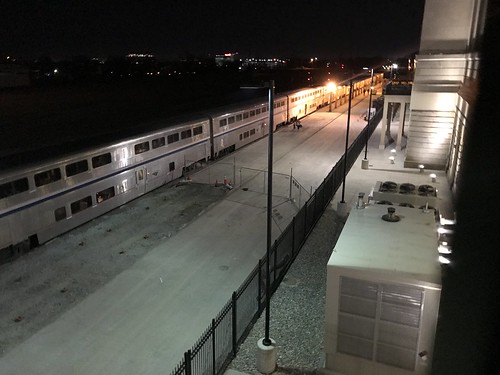
Let’s get the obvious out of the way first: the California Zephyr’s schedule is very inflexible. Each stop gets one train per day, per direction. This is not a commuter train.
While planning my trip I purchased the majority of my train tickets directly from Amtrak’s website. These tickets appeared in the Amtrak app on my phone. To make sure internet access wouldn’t be an issue I saved the tickets to Apple Wallet. I assume there’s a similar option on Android.
I purchased one ticket through Amtrak Vacations — the official third party travel agent for Amtrak — because I had a gift certificate from them. They typically arrange package deals but will purchase any Amtrak tickets you’d like as part of a “custom” trip. The price is no different than booking through Amtrak itself. I had to call them to buy tickets, which they emailed to me. The only real downside is you can’t load these tickets onto the Amtrak app.
The total cost for all the Amtrak segments from Chicago back to San Francisco was $602 with an early booking discount. That included three coach tickets and two overnight roomette sleeper tickets.

The Amtrak app was a must-have for checking train arrival times, I found it very accurate. Whenever my train was running late I’d go have a coffee or something before heading over to the station.
As mentioned above the app also displays your tickets. The tickets themselves are QR-style codes scanned with a handheld device.
Boarding worked differently at each station. The gist of it is that someone scans your ticket, hands you a boarding slip with your destination on it, and directs you to a certain car. Usually your conductor meets you at the door.
The stations vary significantly as well. Some are old stations which serve (or served) multiple passenger rail lines, dubbed union stations back in the day. Others are nothing more than a small waiting room.

In Chicago I waited in the Grand Hall of the old Union Station until my train was called. True to Chicago’s form the station is at least two buildings with an underground “pedway” connecting them. From the waiting area they walked us to our trains in a cavernous underground station where they scanned our tickets.
I have to admit this is a confusing station, many of the signs seem confused as well. Fortunately Amtrak has staff to help find your way around. The newer part of the station has a newsstand and a basic mall-like food court. It’s nothing special, I’d recommend going outside for better food and shopping options.

Omaha’s old Union Station is now a museum, so Amtrak has a tiny station without much going on. It’s not a major stop but it’s big enough to have an indoor waiting area with a heater.
When the train arrived a conductor jumped off and called us outside. There were maybe 10 people tops so it didn’t take long to scan everyone’s tickets.

Denver’s old Union Station isn’t nearly as large as Chicago’s, but it’s completely different. For one thing the interior is filled with shops, upscale dining options, and even a hotel. I considered eating at the station a couple times but it was always too busy.
I asked how to board at the Amtrak window, they directed me to a platform where a line of passengers were already waiting in line for the same train.

In Salt Lake City I might be a little fuzzy on the details because the train was running super late; I think I boarded after 2 AM. It’s a slightly larger version of the Omaha station.
A few people wandered in who had some kind of Greyhound voucher which they exchanged for Amtrak tickets. The conductor scanned everyone’s ticket, told us all to stay inside until he called our group; which everyone promptly ignored and went outside. In fairness I’m sure all the passengers were all as tired as I was.

Reno’s station layout is pretty strange, but essentially you wait in the “basement” next to the sunken railroad tracks. The guy who took my ticket told me which train car to get on relative to the end of the train (this confused many people) and the conductor of that car assigned a seat to me. While sleeper cars are always assigned, this is the first time I had an assigned seat on coach. Realistically you could sit wherever, the “assignments” were not enforced and there were plenty of empty seats.
The weirdest element of the Reno station is in the photo above: there’s an elevator intentionally blocked off by a row of chairs. Fortunately it’s not the only elevator.
Of course, not all stations are as large as these. Many stops in small towns are nothing more than couple benches next to sign bearing the Amtrak logo. As a general rule the larger stations tend to be at stops with luggage service.
If I had one piece of advice for Amtrak here it would be this: the boarding procedures should be more straightforward and remain as consistent as possible between stations. Anything to reduce passengers’ cognitive load is welcome… especially when their train arrives at 2 AM.
